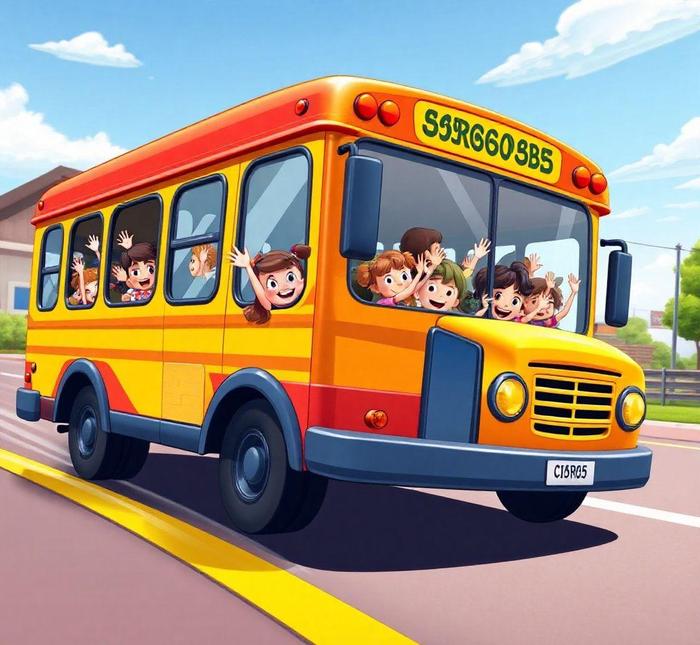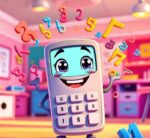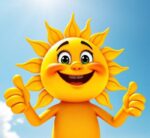- You are here:
- Home »
- words
- » Kindergarten Words That Start With Q [LIST]

Kindergarten Words That Start With Q [LIST]
Teaching young children the alphabet and basic vocabulary is a crucial step in early education. While some letters of the alphabet come with an abundance of familiar words, others, like the letter ‘Q’, can be a bit trickier. However, introducing kindergarten students to words that start with ‘Q’ helps expand their vocabulary and provides an opportunity to explore both common and unique words. From everyday items to concepts that spark creativity, there are numerous words that begin with ‘Q’ that are suitable for young learners to understand and use. This list aims to make learning fun and engaging, offering teachers and parents helpful resources to guide young children through their language development journey.
In this article, we will explore a list of kindergarten words that start with ‘Q’, covering simple and easy-to-understand examples. Whether it’s the word ‘queen’ to introduce royalty or ‘quiet’ to discuss behavior, these words provide opportunities for children to practice their phonics and improve their speaking skills. Each word offers a chance for children to engage with language in a meaningful way, encouraging curiosity and building a strong foundation for their future learning.
Kindergarten Words That Start With Q
1. quack
Quack is the sound a duck makes. It is a fun, loud noise that ducks are known for, especially when they are talking to each other or calling for attention.
Examples
- The duck gave a loud quack as it swam across the pond.
- When you hear a quack, you know a duck is nearby.
2. queen
A queen is a woman who is the ruler of a country, or the wife of a king. She is often seen wearing a crown and living in a palace.
Examples
- The queen wore a beautiful crown and sat on her royal throne.
- The queen is the leader of a country in a monarchy.
3. quick
Quick means fast or speedy. If something is quick, it happens or moves very fast.
Examples
- The rabbit is quick and hops around the garden.
- You need to be quick if you want to catch the ball!
4. question
A question is something you ask when you want to learn more or find out about something. It often begins with words like who, what, where, or why.
Examples
- Can you answer my question about the weather?
- I have a question about how the bird flies.
5. quiet
Quiet means to make little or no sound. It describes a place or time when things are peaceful and not noisy.
Examples
- Please be quiet during storytime in the library.
- The library is a quiet place where people read and study.
6. quiz
A quiz is a small test or game where you try to answer questions correctly. It’s a fun way to learn and see how much you know.
Examples
- We had a fun quiz in class to see who knew the most about animals.
- The quiz asked us to answer questions about our favorite foods.
7. quilt
A quilt is a soft blanket made from many pieces of fabric stitched together. Quilts are often used to keep warm and can be very decorative.
Examples
- Mom made a colorful quilt with many different patterns.
- I love snuggling under my warm quilt during winter.
8. quality
Quality refers to how good or well-made something is. High quality means it is strong, beautiful, or works well.
Examples
- The quality of the painting is amazing, with bright colors and sharp details.
- We buy toys with good quality because they last longer.
9. quarter
A quarter is a type of coin in the United States that is worth 25 cents. It is shiny and silver and is commonly used to buy things.
Examples
- I found a quarter in my pocket today!
- A quarter is worth 25 cents, and it’s silver in color.
10. quaint
Quaint describes something that is charming, old-fashioned, and special in its own way. It often makes people feel happy and relaxed.
Examples
- The little house by the river is quaint with its old brick walls and colorful garden.
- We visited a quaint village with cobblestone streets and cozy houses.
11. quake
A quake is when the ground shakes, often because of an earthquake. It’s a natural event that can make people feel scared but usually doesn’t last long.
Examples
- The ground started to shake when the earth began to quake.
- We felt a small quake, but it wasn’t too scary.
12. quiver
A quiver is a container used to carry arrows. It can also mean a small shake or tremor, like when you feel nervous.
Examples
- The arrow was in the quiver, ready for the next shot.
- I could see the quiver in her hand as she prepared to play the violin.
13. quickly
Quickly means to do something in a fast way, without taking much time.
Examples
- The dog ran quickly to fetch the ball.
- She finished her homework quickly so she could play outside.
14. quietly
Quietly means to do something without making much noise. It’s often used when you need to be gentle and calm.
Examples
- We need to speak quietly in the library so others can read.
- He tiptoed quietly so he wouldn’t wake up the baby.
15. qualify
To qualify means to meet the required standard or rule. It often means you are good enough to do something or enter a competition.
Examples
- You need to qualify for the race by running a certain speed.
- The team worked hard to qualify for the championship game.
16. quilted
Quilted describes something that is made by sewing together different pieces of fabric with padding inside. It’s often used for blankets or jackets.
Examples
- She wore a quilted jacket to keep warm during the winter.
- The quilted pillow had soft layers of fabric stitched together.
17. quietness
Quietness is the state of being silent or calm. It’s the opposite of noise and is often associated with peace and relaxation.
Examples
- The quietness of the forest made it feel peaceful and calm.
- After the loud storm, there was a beautiful quietness in the air.
18. quince
A quince is a yellow fruit that looks similar to an apple but is often too sour to eat raw. It is used in cooking, especially for making jams or pies.
Examples
- We made a delicious pie with the fresh quince from the garden.
- Quince is a fruit that looks like a yellow apple and has a tart taste.
19. quicksand
Quicksand is a type of sand that can trap you if you step on it. It feels soft at first, but it pulls things down into the ground.
Examples
- He accidentally stepped into quicksand and needed help to get out.
- Quicksand looks like regular sand, but it can suck things in if you step on it.
20. quintuplet
Quintuplets are five babies born at the same time. It’s a rare event, and quintuplets are very special.
Examples
- The quintuplets were all born on the same day, five babies at once!
- There were five babies in the family because they were quintuplets.
Historical Context

The letter "Q" holds a unique position in the alphabet, both in terms of its frequency of use and its historical development. Historically, the letter "Q" evolved from the ancient Phoenician alphabet, which laid the groundwork for many modern alphabets. In this early system, "Q" represented a sound that was typically associated with a guttural, velar sound, somewhat like a "k" or "kw." Over time, as Latin and its descendants (such as French, Spanish, and English) took shape, "Q" became more standardized in its usage, typically appearing in combination with the letter "U," which was adopted to represent the sound of "kw."
In terms of its role in early education, the letter "Q" has always been a somewhat challenging one to teach to young children. It appears less frequently in early language development compared to other letters, such as "S," "M," or "B," which are commonly used in foundational vocabulary. Consequently, when kindergarten teachers introduce the letter "Q," they often provide words that are simple to pronounce and relate to children’s early experiences, such as "queen" or "quiet." These words not only familiarize children with the letter’s shape and sound but also build upon the understanding that letters in the alphabet can correspond to tangible things or concepts in the world around them.
The historical context of "Q" in early childhood education is tied to this balance between rarity and specificity. Because it’s less commonly used than many other letters, children often find it harder to recognize and remember, so teachers often lean on visual cues and repetition when introducing words that begin with "Q." The rarity of "Q" in the natural world (compared to letters like "C" or "T") means that children’s vocabulary lists tend to be more limited when starting with this letter, requiring creativity from educators to enrich learning materials.
Word Origins And Etymology
To truly understand kindergarten words that start with "Q," it’s crucial to explore their origins and etymologies. Many of these words have roots in languages such as Latin, French, and Old English, which, in turn, have been influenced by earlier language systems like Greek and Germanic languages. Take the word "queen" as an example. The word originates from the Old English "cwen," which traces back to Proto-Germanic *kwenō, meaning "woman" or "wife." Over centuries, this term evolved to become associated with a female monarch. The shift from "woman" to "ruling monarch" reflects societal changes and the role of women in positions of power, which became more symbolically important during medieval times.
Similarly, the word "quiet" stems from the Latin word "quietus," meaning "resting" or "at rest." This Latin word evolved into the Old French "quiet," which retained the meaning of calm or peaceful. By the time it entered Middle English, it had come to represent a state of tranquility, a meaning still held today. Etymologically speaking, many "Q" words have evolved from languages that emphasize clarity, quietude, and order—qualities often celebrated in the early years of childhood learning. Words like "question" and "quilt" likewise have their roots in languages that suggest inquiry and comfort, respectively, which are vital aspects of a child’s development.
For young learners, these roots can offer insights into the subtle ways language shapes meaning. By understanding the origins of simple "Q" words, children can begin to connect more complex ideas to the concepts they are introduced to in early education. For instance, a child learning about a "queen" might also begin to understand that the word refers not just to a person in power but also to an archetype of care, nobility, and leadership—ideas that will expand as their vocabulary grows.
Common Misconceptions
While "Q" words may be fewer in number, they come with a set of common misconceptions that can hinder young learners’ progress. One of the primary misunderstandings children often have about "Q" is the idea that it always needs to be followed by "U." While this is generally true in modern English (e.g., "queen," "question," "quilt"), it’s not an absolute rule. There are exceptions, such as in words derived from foreign languages, like "Qatar," or "qi," which is a transliteration of the Chinese word for "life force." These exceptions are rarely encountered in kindergarten, but the rigid idea that "Q" always follows "U" can lead to confusion in later stages of learning, especially when students encounter unfamiliar words.
Another misconception is that the "Q" sound is always pronounced the same way. While "Q" is most often pronounced with the "kw" sound (as in "quick" or "quiet"), it can also have different sounds in some cases. In words like "lacquer" or "quiche," the "Q" behaves differently, sometimes representing a "k" sound or even a "ch" sound. This variability, though subtle in the context of kindergarten-level words, may create a sense of inconsistency that children find perplexing.
Additionally, because "Q" is relatively uncommon, children might also struggle to recognize "Q" words when they first encounter them. For instance, they might assume that words like "quiet" or "question" are too complex because of their length or unfamiliar spelling, even though these words follow standard phonetic patterns. Teachers often need to break down these words into simpler components—encouraging kids to recognize familiar syllables like "qu" or "et"—to boost their confidence and comprehension.
Finally, teachers and parents alike sometimes assume that words starting with "Q" are inherently more difficult than those starting with other letters. While some "Q" words can indeed be longer or more complex (like "quicksand" or "questionnaire"), many are short and easy to understand, such as "quilt" or "quiz." Overcoming the assumption that "Q" words are always challenging can help educators approach this letter with a more balanced perspective.
Conclusion
Teaching kindergarten words that begin with "Q" provides an excellent opportunity to not only introduce children to this unique and intriguing letter, but also to open their minds to a world of words rich in history, meaning, and phonetics. By exploring the historical context of "Q," understanding the origins of these words, and acknowledging common misconceptions, we can help young learners gain a deeper appreciation for language and its complexities. As educators and parents guide children through these early stages of language acquisition, fostering an environment of curiosity and discovery is key to making even the more elusive letters, like "Q," accessible and engaging. Through repetition, exposure, and creative teaching strategies, young learners can build a solid foundation in their vocabulary, paving the way for further linguistic exploration as they grow.








